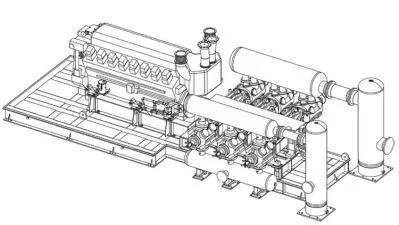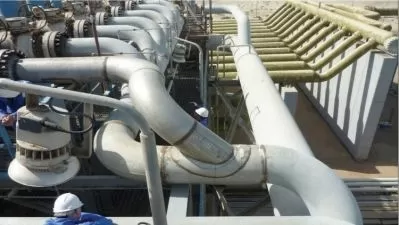Pipeline Stress Analysis using Caesar II
Anup Kumar Dey
1:27:53
Description
Pipeline Stress Analysis course following ASME B31.8/ASME B31.4 using Caesar II
What You'll Learn?
- Liquid and Gas Pipeline Stress Analysis using ASME B31.4 and ASME B31.8
- Difference between Piping and Pipeline
- Differences between ASME B314 and ASME B31.8
- Use Caesar II software for pipeline stress analysis
Who is this for?
More details
DescriptionThis course is perfect for any engineer interested to learn pipeline stress analysis using Caesar II software.
The main topics that are covered in this course are as follows:
Differences between piping and pipeline
Types of Pipelines like water pipelines, oil pipelines, and natural gas pipelines.
Pipeline Stress Analysis Selection Criteria
ASME B31.4 vs ASME B31.8: Major differences between ASME B31.4 liquid pipeline code and ASMEÂ B31.8 gas pipeline codes.
Modeling of Pipeline in Caesar II Software: The steps that are normally followed while modeling a pipeline system for analysis.
Creating Analysis Load Cases: Generating required analysis load cases for specific pipeline system analysis.
Analyzing and studying the results: Studying the results to understand if the pipeline system is acceptable from a stress point of view.
Stress Mark-up and Report Preparation: Marking all the changes required to accept the pipeline system after analysis.
The course is constructed into various sections that clearly explain the subjects. The final part consists of a practical case study. This deals with a practical problem. The detailed modeling steps are shown. Part of the pipeline system is exactly modeled as needs to be done in actual jobs. The steps are explained clearly, then the process for error checking, load case creation, and reviewing the caesar ii generated output results are mentioned.
This course is designed to guide you through the pipeline stress analysis process - using CAESAR II - starting from scratch till being able to understand pipeline alignment sheets, creating a full 3D analysis model, choosing support types & locations, checking code requirements, and finalizing the design drawings/report.
The course also explains the process of report preparation and stress markup preparation.
Who this course is for:
- For piping and pipeline engineers who want to learn the steps followed in pipeline stress analysis.
This course is perfect for any engineer interested to learn pipeline stress analysis using Caesar II software.
The main topics that are covered in this course are as follows:
Differences between piping and pipeline
Types of Pipelines like water pipelines, oil pipelines, and natural gas pipelines.
Pipeline Stress Analysis Selection Criteria
ASME B31.4 vs ASME B31.8: Major differences between ASME B31.4 liquid pipeline code and ASMEÂ B31.8 gas pipeline codes.
Modeling of Pipeline in Caesar II Software: The steps that are normally followed while modeling a pipeline system for analysis.
Creating Analysis Load Cases: Generating required analysis load cases for specific pipeline system analysis.
Analyzing and studying the results: Studying the results to understand if the pipeline system is acceptable from a stress point of view.
Stress Mark-up and Report Preparation: Marking all the changes required to accept the pipeline system after analysis.
The course is constructed into various sections that clearly explain the subjects. The final part consists of a practical case study. This deals with a practical problem. The detailed modeling steps are shown. Part of the pipeline system is exactly modeled as needs to be done in actual jobs. The steps are explained clearly, then the process for error checking, load case creation, and reviewing the caesar ii generated output results are mentioned.
This course is designed to guide you through the pipeline stress analysis process - using CAESAR II - starting from scratch till being able to understand pipeline alignment sheets, creating a full 3D analysis model, choosing support types & locations, checking code requirements, and finalizing the design drawings/report.
The course also explains the process of report preparation and stress markup preparation.
Who this course is for:
- For piping and pipeline engineers who want to learn the steps followed in pipeline stress analysis.
User Reviews
Rating
Anup Kumar Dey
Instructor's Courses
Udemy
View courses Udemy- language english
- Training sessions 5
- duration 1:27:53
- Release Date 2023/04/11









